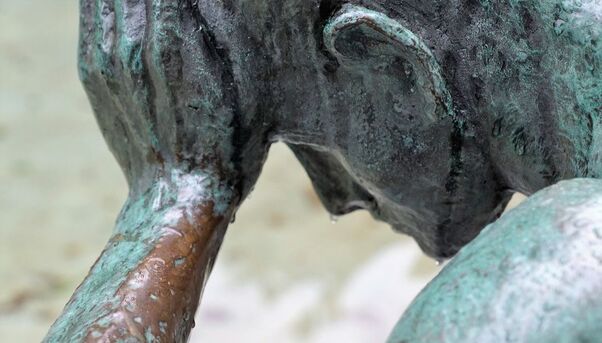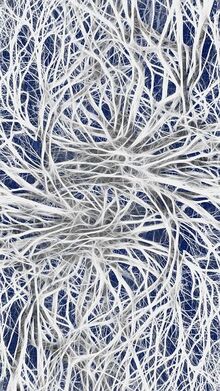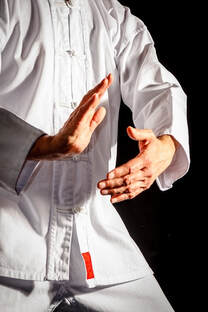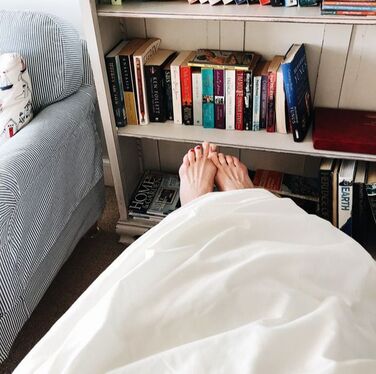|
Qualitative studies present an important viewpoint for creating a well-rounded representation of a modality. I think it’s important, particularly for complementary therapies like craniosacral therapy, for the body of research to contain statements from people who have experienced craniosacral therapy. Often time’s research is focused on numbers as evidence, quantitative analysis. But a qualitative study is a good way to capture the experiential evidence of the validity and safety of a modality from the patient's perspective. This kind of study can ask these important questions, do the people experiencing craniosacral therapy enjoy it? Do people getting craniosacral therapy experience any benefits? Well, people who have craniosacral therapy treatments experience many benefits and enjoy the therapy. The study, Perspectives on the effects and mechanisms of craniosacral therapy: A qualitative study of users’ views, which was published in the European Journal of Integrative Medicine shows how this is true. In this study, 29 people were interviewed about their experiences with craniosacral therapy. They were asked about pain relief and effects on rehabilitation. The interview also investigated holistic health and how craniosacral therapy benefits their body, mind, and spirit. Overall the study showed a very important factor, the importance of the therapeutic relationship between the client and the therapist. Theory emerging from this study regarding CST and the ways in which healing can be enabled holistically suggests that the establishment of a trusting therapeutic relationship enables CST to take clients into altered perceptual states; these in turn facilitate a new level of awareness regarding the interrelatedness of body, mind and spirit, together with an enhanced capacity to care for self and manage health problems. This quote captures the power of the therapy and the importance of having a grounded, skilled therapist. The interrelatedness of the mind, body, and spirit is honored in my practice and is honored as part of the healing process for my clients.
Often times my clients experience great pain relief and headache relief when they are also able to release emotions, stress, and re-establish their relationship with Divine. This holistic care accompanied with the release of restrictions in the nervous system and soft tissues of the body results in wonderful relief from pain and decreased frequency of headaches.
1 Comment
Do you get headaches and also have neck pain or irritation? You may be experiencing cervicogenic headaches – A headache caused by neck dysfunction: nerve irritation, myofascial tensions, misalignment of the cervical vertebrae. The nerves in the neck get so irritated the pain radiates up from the neck into the head. You may just feel the pain in your head around your eyes and forehead and most often isolated to one side of the head. Or you may even feel the pain radiate up from the neck or base of your head to your head. Either way it's terrible to live. The best way to get rid of these headaches is to heal the neck, improve alignment and get rid of the excess tensions of the soft tissues. What’s the best therapy for that? Craniosacral therapy. CranioSacral Therapy is a highly effective, gentle manual therapy that relieves irritation and tension in the neck while improving the alignment of the neck. The light touch of craniosacral therapy melts away the tensions, frees up the nerves, increases blood flow, and relieves the myofascial tensions that are pulling the neck out of alignment. This therapy is the most gentle, non-invasive, and nourishing therapies around. The neck is a delicate area of our body that has to deal with our stress and poor posture, this kind of treatment is exactly what this vulnerable area of our body needs. With continued craniosacral therapy and lifestyle changes, it is possible to have lasting relief from neck pain and headaches. Not only do my clients at Twin Cities Craniosacral have neck pain relief, but the positive outcomes have also been proven in a randomized control trial.
In this research study published in The Clinical Journal of Pain, the participants were experiencing chronic neck pain. Some of these participants received a sham manual therapy, a pretend light touch manual therapy with no craniosacral technique. The other group received a standardized craniosacral therapy treatment. They were all treated once a week for 8 weeks. At the end of the trial, the craniosacral group had clinically significant improvement in pain intensity after the 8 weeks and 20 weeks later! I find these results to be very exciting. Not only do they demonstrate the validity of this therapy, but also the long-term positive results people have from the therapy. Interested in reading the article yourself? Here it is in full text https://www.ncbi.nlm.nih.gov/pmc/articles/PMC4894825/, Haller, H., Lauche, R., Cramer, H., Rampp, T., Saha, F. J., Ostermann, T., & Dobos, G. (2016). Craniosacral Therapy for the Treatment of Chronic Neck Pain: A Randomized Sham-controlled Trial. The Clinical journal of pain, 32(5), 441–449. doi:10.1097/AJP.0000000000000290  Deep pressure therapy, also called weighted blankets, has gained attention lately as a therapy for restless legs, anxiety, and sensory processing challenges, just to name a few. I have one of my own and love using it particularly in the colder Minnesota months, which is pretty much most of the year. What I love most about deep pressure therapy is it's a easy way to de-stress. I am often caring of my 3 year old daughter during the day, most days it is quite the roller coaster of emotions and activities. My weighted blanket is my go to rescue for calm amongst the busy toddler energy. I’ll throw it on my lap as we color or squish playdough, and soon I’m feeling at ease again. Originally these blankets gained popularity as a therapy for sensory processing issues or people on the autism spectrum. But really, it can help anyone, we are all living in a stressful world, and we could all use some help to calm down and relax. The theory behind the blanket is deep pressure therapy, which means, it is a therapy which uses a gentle pressure upon the whole body. The effect of the weight (or pressure) upon the body for a sustained duration engages the proprioceptors in your body, which then alerts your autonomic nervous system to give control over to the parasympathetic nervous system. What that means is, it takes you out of flight and fight and puts you in to calm and collected. So it can help to you unwind after a stressful day at work (or negotiations with a tired 3 year old).  So how does this help extend the benefits of your craniosacral therapy? Well, the pressure balances your body’s nervous system, just like craniosacral therapy does. The body’s response will release endorphins, serotonin, and dopamine, the wonderful trifecta of feel good hormones we could all use more of. Overall you will feel calm, your muscles relax, your heart rate and blood pressure will improve. Does any of this sound or feel familiar to your craniosacral session? Well that’s because craniosacral therapy also enhances your parasympathetic nervous system, releases dopamine, serotonin, and endorphins. So let’s say you invest your time and money on a craniosacral session, only to go to a stressful job and have to deal with Minneapolis road construction and traffic. Soon your body will be back into stressed-out mode. But you can help your body get back into that relaxed state just as you felt after your session by using deep pressure therapy. It will also help the fascia and muscles stayed relaxed, so your body can keep its fascial release and healthy alignment you achieved during your craniosacral session. With craniosacral therapy, and others like it, the goal is often to help your body increase time spent in a relaxed state. Its effects are cumulative. Think of your parasympathetic nervous system as a muscle, you need to continue to engage it in healthy ways to keep it strong and active. So keep at it, keep getting those craniosacral therapy sessions and investing in ways to nourish and nurture your body. Here’s some important tips on finding the right blanket.
 Chronic pain can be very disabling and causes many to feel hopeless. Those suffering from chronic pain must deal with a range of symptoms from constant mild irritation to relentless suffering. It can affect the entire body or be localized. Often people with chronic pain have trouble getting the relief and care they need. Sometimes the healthcare providers are unable to find a cause and end up chasing the symptoms.  In chronic pain, the body has become hypersensitive to any stimulus, the pain receptors and pathways overreact at the site of injury. Sometimes areas within the central nervous system and spinal cord also become hyperactive adapt to the influx of communique from the pain receptors. The body tissues add layer upon layer of compensation to pain stimulates. These compensations are
The fascia in the area becomes thick and tight, adding pressure on nerve receptors, the vascular system and the muscles in that area. Any organs along the nerve pathway may also become over stimulated or decrease function.  The effects of chronic pain can snowball, truly making life more and more challenging. Eventually stress responses increase and the person becomes stuck in hypervigilant, fight and flight mode. The sympathetic nervous system starts to overpower the parasympathetic aspect of the nervous system. So more and more time is spent in the sympathetic and less time spent in the parasympathetic state. Multiple avenues of healing need to be used and should include some of the following. Diet therapy to give the body the nutrients it needs to self-heal. Physical therapy to help with exercise, strength, and alignment. Tai Chi or qigong are very effective for strengthening the body and also easing pain and stress. Mindfulness practices or psychotherapy to help with stress and emotional challenges. And the most important avenue of healing, craniosacral therapy.  Craniosacral therapy is such an important aspect of healing from chronic pain because it address multiple aspects of the physiology behind the over-sensitized feedback loop involved in chronic pain. A craniosacral therapist is able to relieve the pressure on the nerves, calm the pain receptors, increase blood flow, calm down the stress response. And importantly the therapy decreases the time spent in flight and flight and increases the time spend in rest and digest mode. The therapist is able to identify the pain pathway and treats the original trauma and tissues involved to empower the body to heal. What makes Craniosacral Therapy so unique is that it is a very gentle manual therapy that uses light touch and specialized techniques to pinpoint origins of trauma in the body and release the patterns of dysfunctions in such a way that they melt away dysfunctions rather than using invasive pressure that can cause more injury or illicit a defensive reaction from the tissue. The soft touch of the therapy engages the parasympathetic nervous system and the body starts to self correct. It is important to release the effects of trauma in the body with gentle techniques so the body is able to naturally let go of the trauma in an efficient way. This is why craniosacral treatments are lasting and effective. The path out of the pain is possible, but it requires the commitment to lifestyle changes and manual therapies. The key manual therapy for recovery is craniosacral therapy and it is the best first approach. The more manual therapy the greater pain relief and ease of body use, which will help to make the nutritional and lifestyle changes to help the body recover. Often regular treatments are needed for the first few weeks, then treatments farther apart for continued relief and maintenance.
|
What is self-care?
|
What Our Clients Are Saying"Janet is an incredibly gifted healer. She does life-changing bodywork. I can’t recommend her highly enough." Facebook Recommendation |
Contact UsTwin Cities CranioSacral
Janet Crow MS, CMT, CST-T 557 West 7th Street Saint Paul, MN 55102 (612) 444-6494 crowcst@gmail.com |



 RSS Feed
RSS Feed